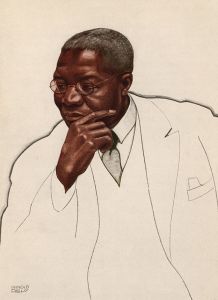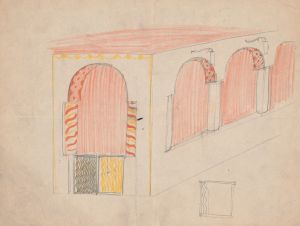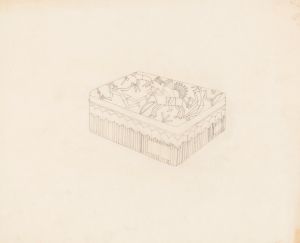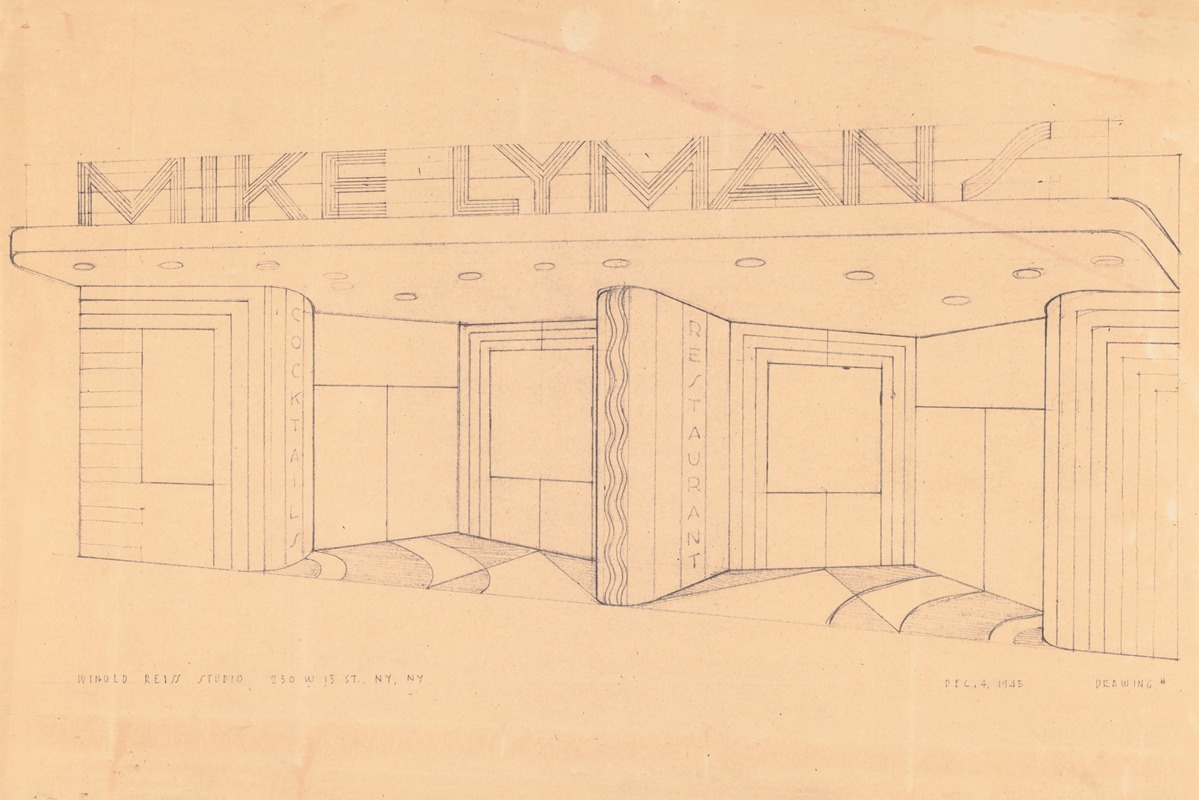
Drawings for proposed decorations of Mike Lyman’s Restaurant, 424 W. Sixth St. Los Angeles, CA. Perspective of entrance
A hand-painted replica of Winold Reiss’s masterpiece Drawings for proposed decorations of Mike Lyman’s Restaurant, 424 W. Sixth St. Los Angeles, CA. Perspective of entrance, meticulously crafted by professional artists to capture the true essence of the original. Each piece is created with museum-quality canvas and rare mineral pigments, carefully painted by experienced artists with delicate brushstrokes and rich, layered colors to perfectly recreate the texture of the original artwork. Unlike machine-printed reproductions, this hand-painted version brings the painting to life, infused with the artist’s emotions and skill in every stroke. Whether for personal collection or home decoration, it instantly elevates the artistic atmosphere of any space.
Winold Reiss, a German-American artist known for his work in design and illustration, created a series of drawings for the proposed decorations of Mike Lyman’s Restaurant located at 424 W. Sixth St. in Los Angeles, California. Reiss, who was born in 1886 in Karlsruhe, Germany, immigrated to the United States in 1913. He brought with him a European sensibility that he combined with American themes, making his work distinctive and influential in the realm of interior design and public art.
Reiss's work for Mike Lyman’s Restaurant is a testament to his ability to blend artistic styles with functional design. The restaurant, which was a popular dining spot in Los Angeles, sought to create an inviting and aesthetically pleasing environment for its patrons. Reiss’s perspective drawing of the entrance captures his vision for the space, showcasing his skill in creating a harmonious balance between art and architecture.
The perspective drawing of the entrance is characterized by Reiss’s attention to detail and his use of vibrant colors, which were hallmarks of his style. His approach often involved incorporating elements of modernism and Art Deco, which were prevalent during the time he was active. This style was particularly fitting for Los Angeles in the early to mid-20th century, a period when the city was experiencing rapid growth and a burgeoning cultural scene.
Reiss was known for his ability to create spaces that were not only visually appealing but also culturally resonant. His work often included motifs and designs that reflected the diverse cultural landscape of America. Although specific details of the motifs used in the Mike Lyman’s Restaurant project are not extensively documented, it can be inferred from Reiss’s other works that he likely employed a similar approach, integrating patterns and designs that would resonate with the eclectic atmosphere of Los Angeles.
In addition to his work in restaurant design, Winold Reiss made significant contributions to other areas of art and design. He was a prolific portraitist, particularly noted for his portraits of Native Americans and African Americans, which were groundbreaking at the time for their respectful and dignified representation. His work in this area was part of a broader effort to document and celebrate the cultural diversity of the United States.
Reiss’s influence extended beyond his own projects, as he also played a role in art education. He founded the Winold Reiss Art School in New York City, where he taught and mentored a new generation of artists and designers. His legacy is reflected in the continued appreciation of his work and the ongoing influence of his design principles in contemporary art and architecture.
The drawings for Mike Lyman’s Restaurant remain a part of Reiss’s enduring legacy, illustrating his unique ability to transform commercial spaces into works of art. While the restaurant itself may no longer exist, the artistic vision captured in Reiss’s drawings continues to be appreciated by art historians and enthusiasts alike.






![[Design drawing for Manhattan House Longchamps Restaurant, corner of 3rd Avenue and 65th Street, New York, NY.] [Study for mosaic front](/imgs/249260/s/winold-reiss-design-drawing-for-manhattan-house-longchamps-restaurant-corner-of-3rd-avenue-and-65th-street-new-york-ny-study-for-mosaic-front-441f1ed6.jpg)
![Design for fine art print, ‘The Mad Dancer’.] [Original study for woodcut print](/imgs/249285/s/winold-reiss-design-for-fine-art-print-the-mad-dancer-original-study-for-woodcut-print-636dd80b.jpg)
![Designs and photographs for alterations to St. James Bar Restaurant, W. 181 St. and New York, NY.] [Study of exterior elevation](/imgs/249306/s/winold-reiss-designs-and-photographs-for-alterations-to-st-james-bar-restaurant-w-181-st-and-new-york-ny-study-of-exterior-elevation-c23a0b8e.jpg)
![Graphic design drawings for Barricini Candy packages.] [3-D Study for 6 rectangular boxes](/imgs/249345/s/winold-reiss-graphic-design-drawings-for-barricini-candy-packages-3d-study-for-6-rectangular-boxes-2f81667e.jpg)
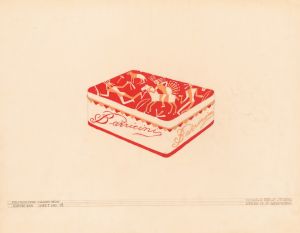
![Interior perspective drawings of Hotel Siwanoy, Mount Vernon, NY.] [Interior perspective of dining room](/imgs/249368/s/winold-reiss-interior-perspective-drawings-of-hotel-siwanoy-mount-vernon-ny-interior-perspective-of-dining-room-d26480cd.jpg)
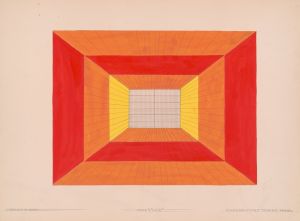
![Drawings for proposed decorations of Mike Lyman’s Restaurant, 424 W. Sixth St., Los Angeles, CA.] [Drawing #10, Scheme 1; Color scheme for ceiling – main dining room](/imgs/249426/s/winold-reiss-drawings-for-proposed-decorations-of-mike-lymans-restaurant-424-w-sixth-st-los-angeles-ca-drawing-10-scheme-1-color-scheme-for-ceiling-main-dining-room-6113fb5a.jpg)
![Miscellaneous small sketches for inlaid table tops.] [Design with female face and cocktail beverage](/imgs/249434/s/winold-reiss-miscellaneous-small-sketches-for-inlaid-table-tops-design-with-female-face-and-cocktail-beverage-70c0c6ed.jpg)
